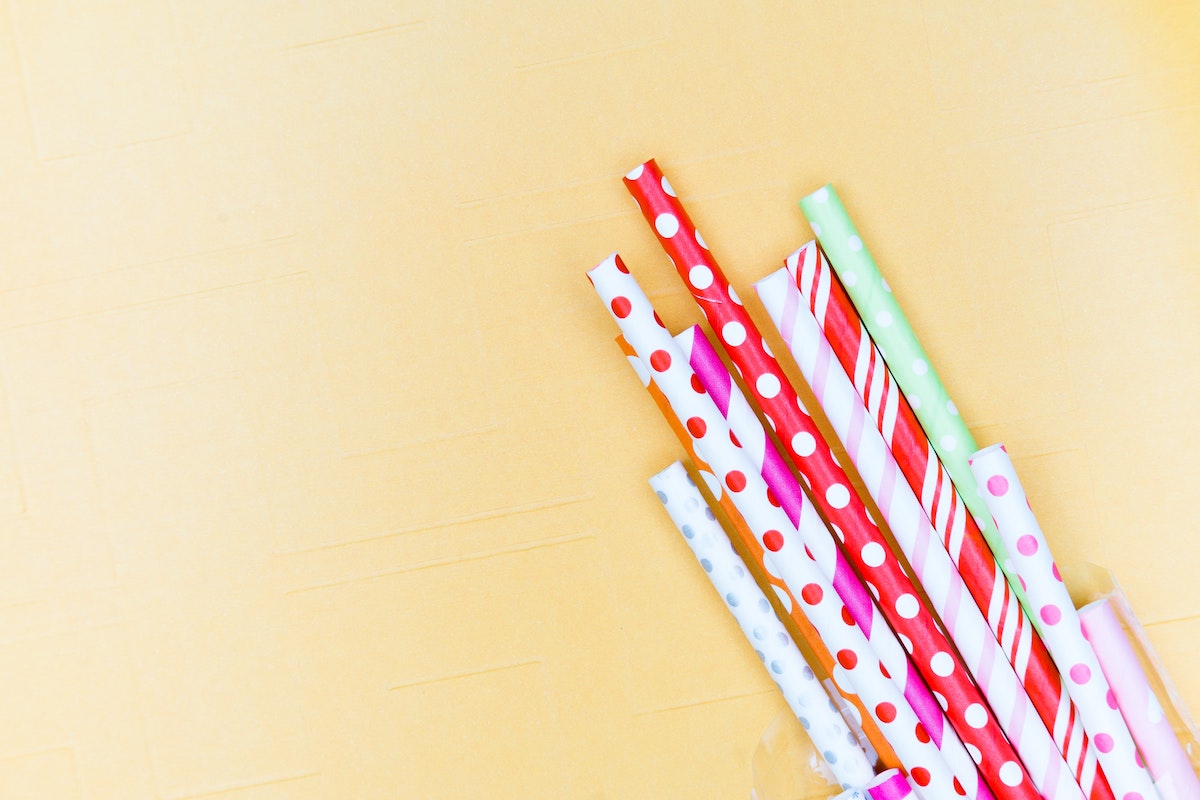
Paper Drinking Straws: Benefits, Best Uses & Disadvantages
by
reusably
Disclosure: This site uses affiliate links and advertising and may receive a commission as a way to help fund our vision of spreading awareness about the benefits of switching to reusable products.
The Benefits, Best Uses, and disadvantages of Paper Drinking Straws
We are exploring the potential benefits and drawbacks of using paper straws as a replacement for single-use plastic straws. It is important to look at the environmental impact of paper straws, their potential health benefits, and the types of beverages they are best suited for. Hopefully after reading this article, you should have a better understanding of whether paper drinking straws are a viable alternative to single-use plastic straws.
Are paper straws better for the Environment?

A recent study just confirmed that paper straws are in fact toxic to the environment.
Before this study was conducted, paper straws were generally considered to be more environmentally friendly than plastic straws because they are biodegradable and can break down more easily in nature.
However, the environmental impact of paper straws can vary depending on how they are made and disposed of. For example, if the paper for the straws is sourced sustainably and the straws are properly composted, the environmental impact can be minimal.
On the other hand, if the paper is not sourced sustainably and the straws end up in a landfill, they may not break down as easily and could potentially have a negative impact on the environment.
Are paper straws reusable?
Paper straws are not typically designed to be reused. Unlike other types of reusable straws, which are durable and can be washed and used multiple times, paper straws are designed to be used once and then disposed of. This is because paper is not as durable as other materials and may break down or disintegrate when it is used repeatedly.
The food-safe coating that is applied to paper straws to prevent them from breaking down in liquid may start to break down or become contaminated after a single use, making the straws unsuitable for reuse. It is important to use and dispose of paper straws according to the instructions provided by the manufacturer to ensure that they are used in the most environmentally-friendly way possible.
Are paper straws a healthier option?
In terms of health, paper straws are no longer considered to be a healthier option than plastic straws even though they do not contain potentially harmful chemicals such as BPA and phthalates. However, some people may have concerns about the potential for paper straws to break down and disintegrate in liquid, especially if they are used for longer periods of time.
What types of beverages are paper straws best for?
Overall, paper straws are best used for beverages that are not too thick and are not intended to be consumed for an extended period of time. This could include drinks like water, soda, or juice. It is important to be aware of the potential disadvantages of using paper straws and to consider the environmental and health impacts when deciding whether to switch from plastic to paper straws.
What are paper straws made of?
Paper straws are made from paper, typically from sustainably-sourced materials. The paper is cut and shaped into the form of a straw, and may be treated with a food-safe coating to prevent it from breaking down and disintegrating in liquid. The exact composition of the paper and coating used in paper straws can vary depending on the manufacturer.
How long do paper straws last?
The lifespan of a paper straw depends on a number of factors, such as the quality of the paper and coating used, the type of beverage it is used for, and the length of time it is used for. In general, paper straws are not as durable as plastic straws and may not last as long. Some paper straws may start to break down and disintegrate after a few hours of use, while others may last for several hours or even the entire day. It is important to carefully read the product information and instructions provided by the manufacturer to determine the expected lifespan of a particular brand of paper straw.
How well do paper straws work?
The performance of paper straws can vary depending on the brand and type of straw, as well as the type of beverage they are used for. Some paper straws may work well for a wide range of beverages, while others may be better suited for certain types of drinks. In general, paper straws are not as durable as plastic straws and may not be able to handle thick or heavy beverages as well. They may also start to break down and disintegrate in liquid after a certain amount of time, which can affect their performance. It is important to carefully read the product information and instructions provided by the manufacturer to determine the expected performance of a particular brand of paper straw.
Are paper straws recyclable?
Paper straws are made from paper, which is a recyclable material. However, the ability to recycle paper straws can vary depending on the type of paper and coating used, as well as the facilities and processes available for recycling. In some cases, paper straws may not be accepted by local recycling programs because of the small size or because of the food-safe coating that is applied to the straws to prevent them from breaking down in liquid. It is important to check with your local recycling program to determine whether paper straws are accepted and how they should be prepared for recycling. In general, it is best to compost paper straws whenever possible, as this can help to break down the straws more quickly and reduce their environmental impact.
What are some of the disadvantages of paper straws?

The main disadvantages of paper straws include:
- A recent study shows that paper straws may contain toxic forever chemicals that do not biodegrade and are bad for your health.
- They can become soggy and lose their shape quickly when used with acidic or hot drinks.
- They are more expensive to produce than plastic straws.
- They are not as durable as plastic straws and can break easily.
- They are not recyclable or biodegradable as easily as some other materials, such as bamboo.
- They are not as widely available as plastic straws.
- They are not as efficient for commercial use as plastic straws.
It’s also worth mentioning that paper straws have a environmental benefits over plastic straws as they are biodegradable and can break down in the environment, but they are not as environmentally friendly as other materials such as bamboo or metal straws.
Join us on our journey to increase awareness on the benefits of living Reusably.
Top Reusable Straws Posts
- Recent Study Find Paper Straws May Contain Toxic Forever Chemicals
- Portable Travel Straws: Top Reusable Options
- Silicone vs Metal Straws: Comparison, Pros & Cons
- Metallic Straws: Benefits, Uses & Maintenance
- Reusable Silicone Straws: Benefits, Best Uses & Drawbacks
- Paper Straws vs Plastic Straws: Comparison, Benefits & Drawbacks
- Top Reusable Straws That Open To Clean
- Reusable Bamboo Straws: Benefits, Uses & Drawbacks
- How To Clean Reusable Straws: Instructions, Supplies & Tips
- Paper Drinking Straws: Benefits, Best Uses & Disadvantages
